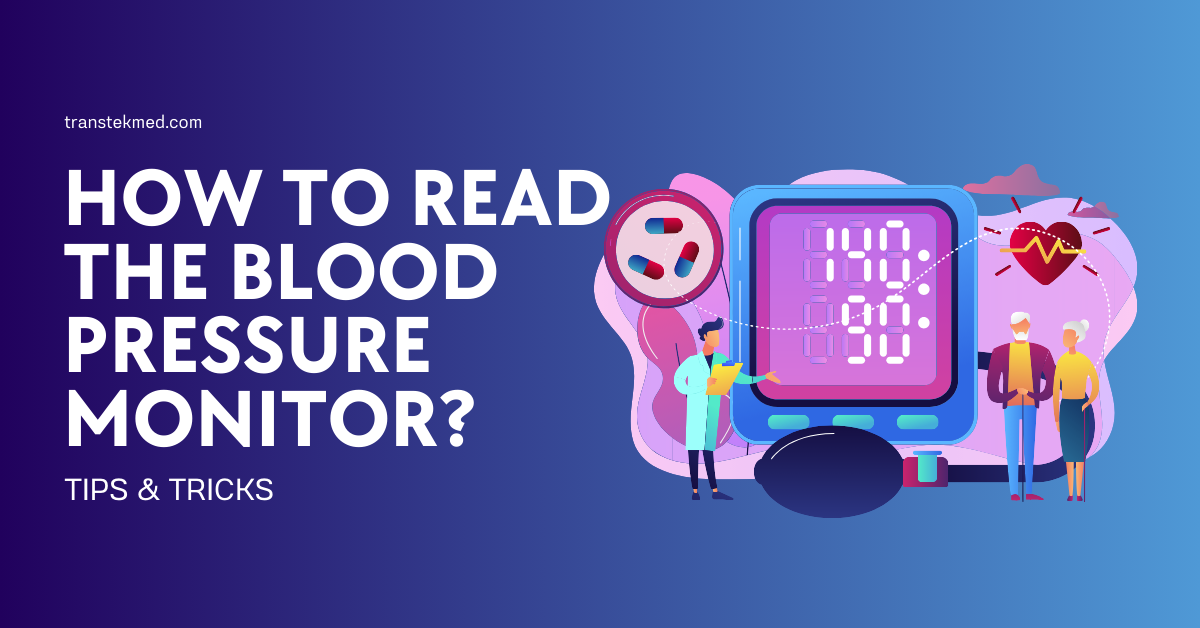It is important to get accurate blood pressure readings, as these ensure precise risk assessment and timely interventions. Basically, the accuracy of the readings primarily depends on the careful application of the blood pressure monitor. No matter which type of blood pressure monitor it is, you need to know how to take the readings and then interpret the results.
So in this article, we’ll discuss how to read the blood pressure monitor both for arm and wrist.
How to Read Arm Blood Pressure Monitor?
Follow these simple steps to accurately read your arm blood pressure monitor and track your cardiovascular well-being effectively:
Set Your Position
- Your comfort is important so sit with your back properly supported. Also, place your both feet on the floor.
- After sitting, ensure that your arms are placed on a flat surface while your palm is facing upward.
Place the Cuff Perfectly
- Properly secure the monitor cuff about one inch above the bend of your elbow.
- Ensure a snug fit, allowing space for only one or two fingers between the cuff and your arm.
Be Prepared for Measurement
- Once you’re all set, relax, and avoid talking during the measurement.
- Make sure to remain still with your cuffed arm at heart level.
Take the BP Reading
- Press the start button on the arm blood pressure monitor or simply follow the instructions specifically given in the manual.
- The monitor cuff will inflate and then gradually deflate, so stay relaxed.
- As it starts taking the reading, the BP monitor will display both the systolic pressure and diastolic pressure on the screen.
Interpret the Reading Results
- If the monitor shows the BP around 90-120 mm Hg, this means that it is Systolic Pressure (Top Number). This represents the pressure in your arteries when the heart beats.
- If the monitor shows the BP around 60-80 mm Hg, this means that it is Diastolic Pressure (Bottom Number). This indicates the pressure in your arteries between heartbeats.
How to Read Wrist Blood Pressure Monitor?
Follow these simple steps to take, read, and interpret your wrist bp monitor results with precision:
Be Prepared
- It is important to sit comfortably with your back properly supported and your feet flat on the floor.
- Position the monitor’s cuff snugly on your wrist, aligning it with your heart in a proper way.
Start the Measurement
- Turn on the wrist blood pressure monitor and follow the manual’s instructions to initiate the measurement. If you’re already aware, simply press the start button.
- Make sure to keep your wrist at heart level during the measurement.
Interpret the Reading
- The wrist monitor will display your blood pressure reading, typically in the format of two numbers (for example – 130/80 mm Hg).
- The top reading that you see on the monitor screen basically represents the systolic pressure (during heartbeats). Whereas the bottom reading indicates the diastolic pressure (between heartbeats).
Quick Tips for Accurately Measuring Blood Pressure
- Choose a validated, accurate automatic digital BP monitor, such as transtek’s blood pressure monitors, which are available for both wrist and arm.
- Position the cuff on the bare upper arm, snug but not too tight, an inch above the elbow.
- Sit quietly for 5 minutes before measurement, avoiding caffeine, smoking, and exercising.
- Before BP measurement, sit with a straight back, flat feet, and arms properly supported at your heart level.
- Rest your arm (which is to be cuffed) on a flat surface to maintain a relaxed position.
- Make sure to use the bathroom before having your blood pressure measured.
- It is better to remain quiet and still during the measurement process. Just be relaxed.
- Take 2-3 measurements a minute apart, properly recording and averaging for reading accuracy.
- Measure blood pressure at the same time (each day) to ensure BP reading consistency.
- Keep track and share blood pressure readings with your healthcare professional, if required.
- Regularly inspect the blood pressure monitor and cuff for damage. You may calibrate as needed, over time.
- Always follow the specific instructions from your healthcare provider.
Final Words
Understanding blood pressure readings is crucial for health management. The systolic (top) and diastolic (bottom) numbers, typically around 120/80 mm Hg, signify heart and between-heartbeat pressures.
Whereas elevated readings, such as 120-129 mm Hg top, 80 mm Hg or below-bottom or hypertension Stage 1 and Stage 2 or higher-bottom require immediate medical attention. Just know that a top reading over 180 mm Hg and/or a bottom reading over 120 mm Hg indicates a hypertensive crisis.
Don’t forget to choose the right blood pressure monitor and follow proper measurement practices for 100% reading accuracy and ease.






